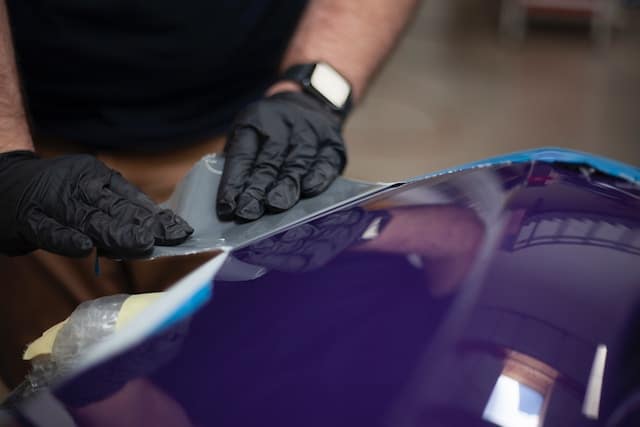Understanding Car Paint Types and Their Repair Needs
 Car paint does more than just make your vehicle look good. It acts as a protective barrier against environmental elements like UV rays and moisture. Knowing the different types of car paint can help you understand their specific repair needs, ensuring longevity and maintaining the vehicle’s aesthetic appeal.
Car paint does more than just make your vehicle look good. It acts as a protective barrier against environmental elements like UV rays and moisture. Knowing the different types of car paint can help you understand their specific repair needs, ensuring longevity and maintaining the vehicle’s aesthetic appeal.
Types of Car Paint
Modern vehicles typically feature several layers of paint. The base coat is the color layer, giving the car its appearance. Clear coats, applied over the base, provide gloss and protection. Understanding these layers is crucial for effective maintenance and repair.
Acrylic Lacquer
Once popular in the automotive industry, acrylic lacquer provided cars with a glossy finish. Its fast drying times and ease of application made it a preferred choice. However, its durability is lower compared to modern paints, making it more susceptible to damage and environmental factors.
Enamel Paints
Enamel paints are known for their durability. They come in two types: single-stage, where color and shine are achieved in one step, and two-stage, which requires a base coat and a clear coat. Enamel’s hard finish, however, can be challenging to repair if damaged.
Urethane Options
Urethane paints are widely used due to their resistance to chipping and fading. They offer great durability and a high-quality finish. These paints are flexible, making them suitable for various weather conditions, but repairing urethane can be complex and often requires professional expertise.
Metallic Paints
Metallic paints, containing tiny metal flakes, offer a unique shimmer and greater visual depth. While they are highly appealing, repairing metallic finishes can be tricky. Matching the original color and sparkle often requires a skilled professional.
Pearlescent Finishes
Similar to metallic, pearlescent paints use ceramic crystals instead of metal flakes. These create a color-shifting effect in different lighting conditions. Such complexity in appearance makes pearlescent finishes one of the most challenging to repair accurately.
Matte Finishes
Matte finishes have gained popularity for their non-glossy, modern look. Special care is needed for these paints, as they can be easily damaged by improper cleaning methods or abrasive materials. Repairing matte finishes usually requires professional attention to avoid gloss spots.
Paint Repair Tips
Proper maintenance can extend the life of your car’s paint. Regular washing and waxing protect the surface from dirt and minor abrasions. For small scratches, touch-up pens can be effective. However, deeper scratches and chips often require more extensive repair techniques.
Professional vs DIY Repair
Deciding between DIY and professional paint repair depends on the damage’s extent and the paint type. Minor blemishes might be manageable at home, but professional services are recommended for larger or more complex repairs, especially with challenging finishes like metallic or pearlescent.
Conclusion
Different car paint types each have unique characteristics and repair needs. Knowing these can help car owners make informed decisions about maintenance and repair, preserving the vehicle’s appearance and value. Whether handling minor touch-ups or seeking professional services for more extensive repairs, proper care is essential for keeping your car’s paint in pristine condition.
